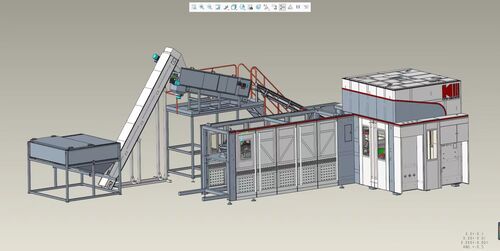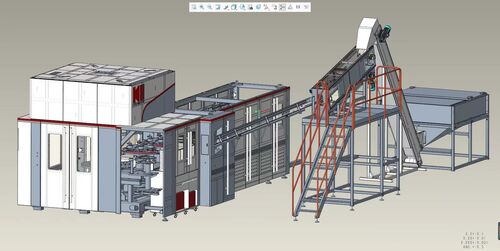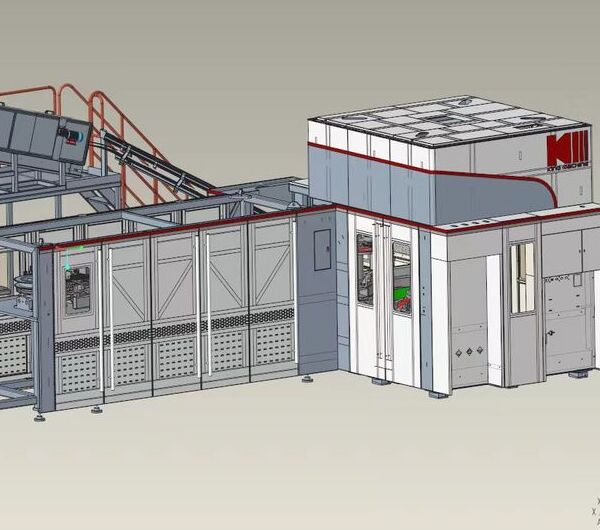Beer is one of the most popular alcoholic beverages in the world, and its production process involves multiple stages such as raw material processing, saccharification, fermentation, maturation, filtration, and filling. The beer production line is an automated equipment that connects these links to achieve large-scale beer production. This article will provide a detailed analysis of the composition, design, process, equipment, installation, debugging, and maintenance of beer production lines.

1、 Composition of beer production line
The beer production line mainly consists of the following parts:
• Raw material processing system: crushing, screening, cleaning and other processing of raw materials such as malt, rice, hops, etc.
• Glycation system: converts starch into maltose.
• Fermentation system: converts maltose into alcohol.
• Maturation system: makes the flavor of beer more mellow.
• Filtration system: removes impurities from beer.
• Filling system: Fill beer into bottles, cans, or other containers.

2、 Beer production line design
The design of a beer production line needs to comprehensively consider the following factors:
• Beer production: Determine the scale and configuration of the production line based on the production scale and target output of the brewery.
• Beer type: Different types of beer require different production processes and equipment, and need to be designed according to the type of beer.
• Investment budget: The investment cost of the beer production line is relatively high, and it needs to be designed reasonably according to the budget.
• The design of a beer production line mainly includes the following steps:
• Process flow design: Determine the process flow of beer production and the process parameters of each link.
• Equipment selection: Select appropriate equipment according to the process flow.
• Production line layout: Reasonably arrange various equipment on the production line to ensure production efficiency and safety.

3、 Beer production line technology
The beer production process mainly includes the following steps:
• Raw material processing: Crushing, screening, and cleaning of raw materials such as malt, rice, and hops.
• Glycation: converting starch into maltose.
• Fermentation: converting maltose into alcohol.
• Maturation: To make the flavor of beer more mellow.
• Filtration: Remove impurities from beer.
• Filling: Fill beer into bottles, cans, or other containers.
4、 Beer production line equipment
The beer production line equipment mainly includes the following categories:
• Raw material processing equipment: crushers, screening machines, cleaning machines, etc.
• Saccharification equipment: Saccharification pot, malt juice separator, etc.
• Fermentation equipment: fermentation tanks, fermentation tanks, etc.
• Maturation equipment: Maturation tanks, barrels, etc.
• Filtering equipment: filters, clarifiers, etc.
• Filling equipment: filling machines, sealing machines, sterilization machines, etc.

5、 Installation of beer production line
The installation of the beer production line requires professional personnel to carry out and strictly follow the design requirements for construction. During the installation process, the following precautions should be taken:
• Site preparation: The installation site needs to meet the space requirements of the production line and have necessary facilities.
• Equipment foundation: The equipment foundation needs to be firm and reliable, able to withstand the weight and vibration of the equipment.
• Equipment installation: Equipment installation needs to follow the instructions and ensure installation accuracy.
• Pipeline connection: The pipeline connection needs to be tight and leak free.
• Electrical installation: Electrical installation must comply with safety standards.
6、 Beer filling
Beer filling is the final step in beer production, and it is also a key link in whether beer can be presented to consumers safely, with good quality, and aesthetically pleasing. At present, beer filling mainly uses three methods: plastic bottles, glass bottles, and cans.
• Plastic bottles: lightweight, impact resistant, low cost, but with poor transparency and oxygen barrier, and not easily degradable. Suitable for price sensitive consumers, outdoor activities, and occasions that require lightweight packaging.
• Glass bottle: Good texture, light barrier, and oxygen barrier, but heavy weight, fragile, and high cost. Suitable for high-end beer, occasions that need to reflect quality, and occasions that require reuse.
• Easy to pull cans: lightweight, durable, with good light barrier and high recovery rate, but high cost and easy to produce a metallic odor. Suitable for young consumers, outdoor activities, and occasions that require rapid cooling.
Choosing a beer filling method requires comprehensive consideration of factors such as beer type, target market, and cost.







